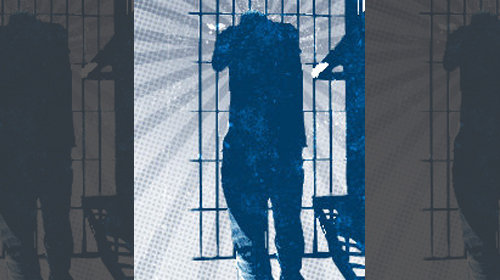
In 2003, Congress took an important first step in addressing a national tragedy: epidemic levels of rape and sexual abuse in our nation’s prisons, jails and youth detention centers. The Prison Rape Elimination Act (PREA), passed unanimously in Congress and signed into law by President George W. Bush, called for the development of binding national standards for the prevention, detection, response and monitoring of sexual violence behind bars. After nine years, these standards were finally released by the U.S. Department of Justice earlier this month. They represent the first national effort to hold correctional facilities accountable for abuse while at the same time instituting policies and procedures that will help prevent abuse in the first place.
These standards are needed now more than ever as demonstrated by a just-released study of the federal Bureau of Justice Statistics which found that nearly 10 percent of recently released prisoners reported sexual victimization while incarcerated. If properly implemented, the PREA standards will go a long way towards preventing such widespread abuse.
Importantly, the standards recognize that youth in adult facilities can never be kept safe from sexual abuse at the hands of adults. Although the Department did not adopt the total ban on placing youth in adult facilities urged by child advocates, it did adopt a standard that significantly restricts the placement of youth in adult facilities by banning the housing of kids under 18 in adult housing units; prohibiting contact between youth and adults in common areas; and ensuring constant supervision of youth by staff.
At the same time, the Department recognized that facilities should not comply with PREA standards by simply placing children in solitary confinement. This is an all too common practice in adult facilities – despite the astonishing rates of youth suicide, self-harm and developmental difficulties such isolation causes. Under PREA, correctional facilities must make best efforts to limit the use of isolation for kids, as well as giving them access to exercise, education and other rehabilitative programming.
As the New York Times Editorial Board noted, this is not a perfect solution. The smarter, wiser and more humane option is to exclude youth under 18 from adult facilities altogether. But until we see stronger leadership from our government on this issue, PREA gives communities the tools to hold facilities accountable by requiring independent audits of every facility in the state for compliance with the national standards. As the Times notes: “If monitored and enforced, [PREA] could help curb the assaults that are shamefully endemic to the corrections system.”
Under PREA, states where auditors determine non-compliance with the standards could lose 5 percentof government grant funds. Community groups can and should have input into these audits. Ensuring strong compliance with the current standards, and penalties where states fail to change their policies and practices, is our next challenge.
Learn more about sexual abuse in prison: Sign up for breaking news alerts, follow us on Twitter, and like us on Facebook.

